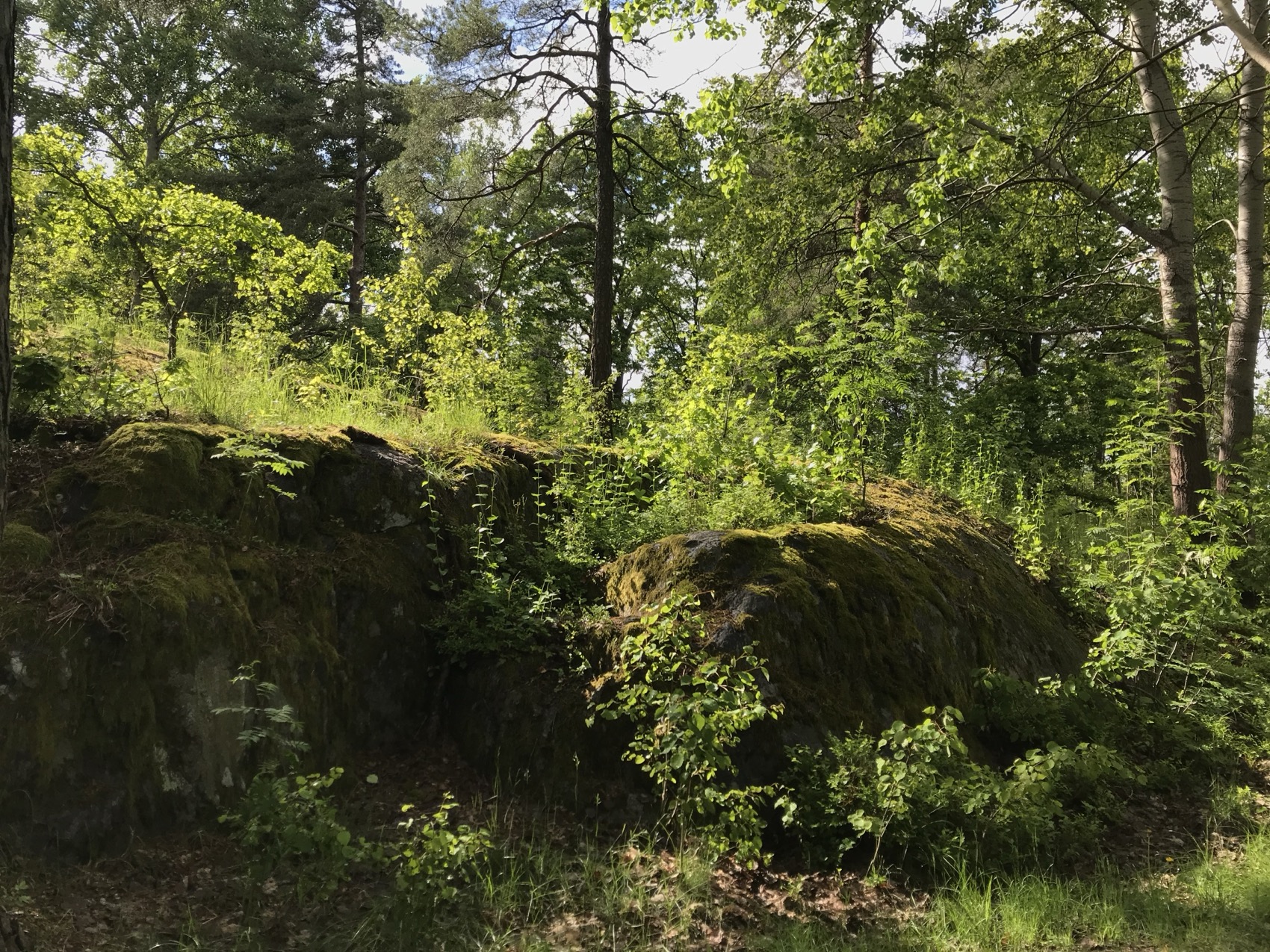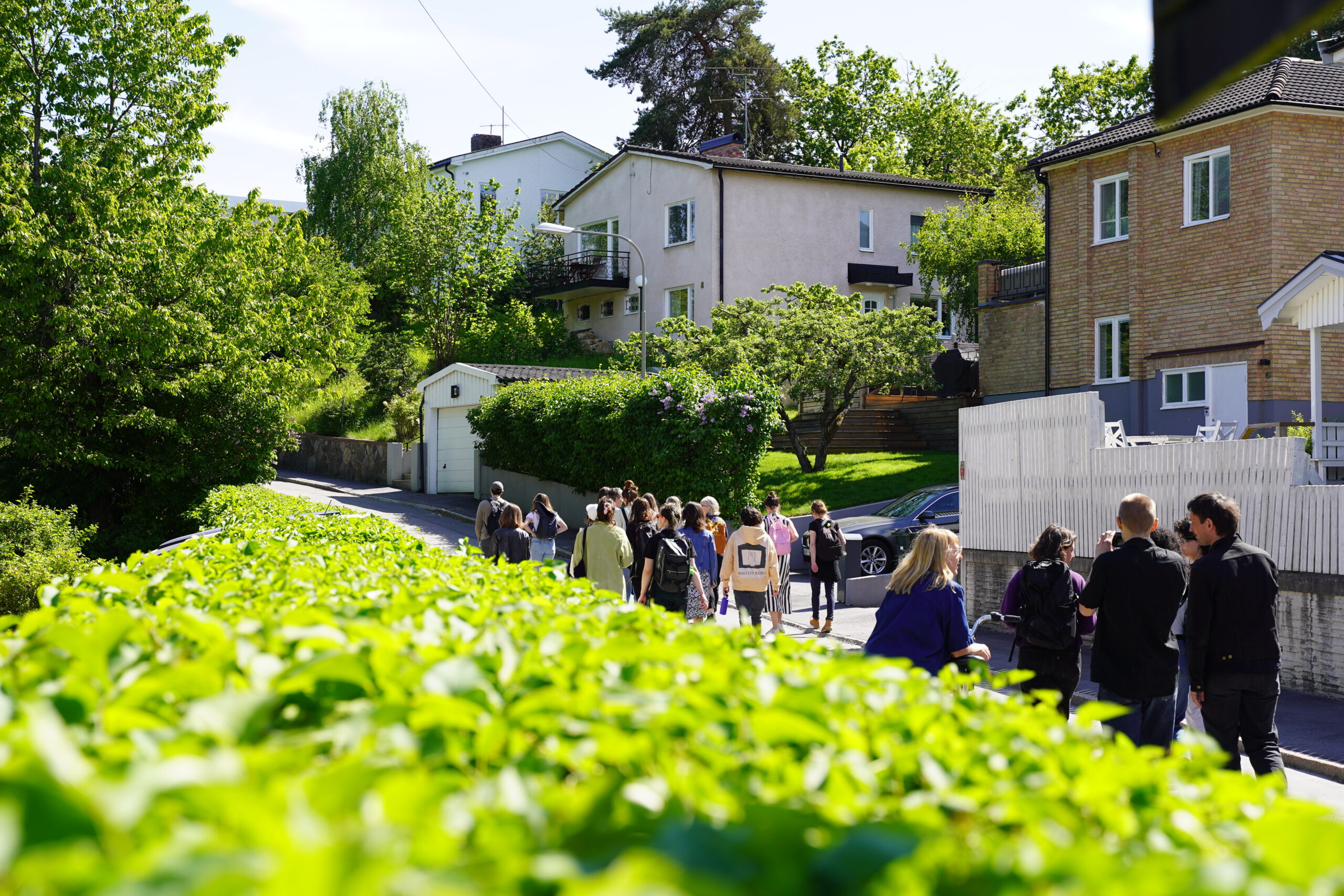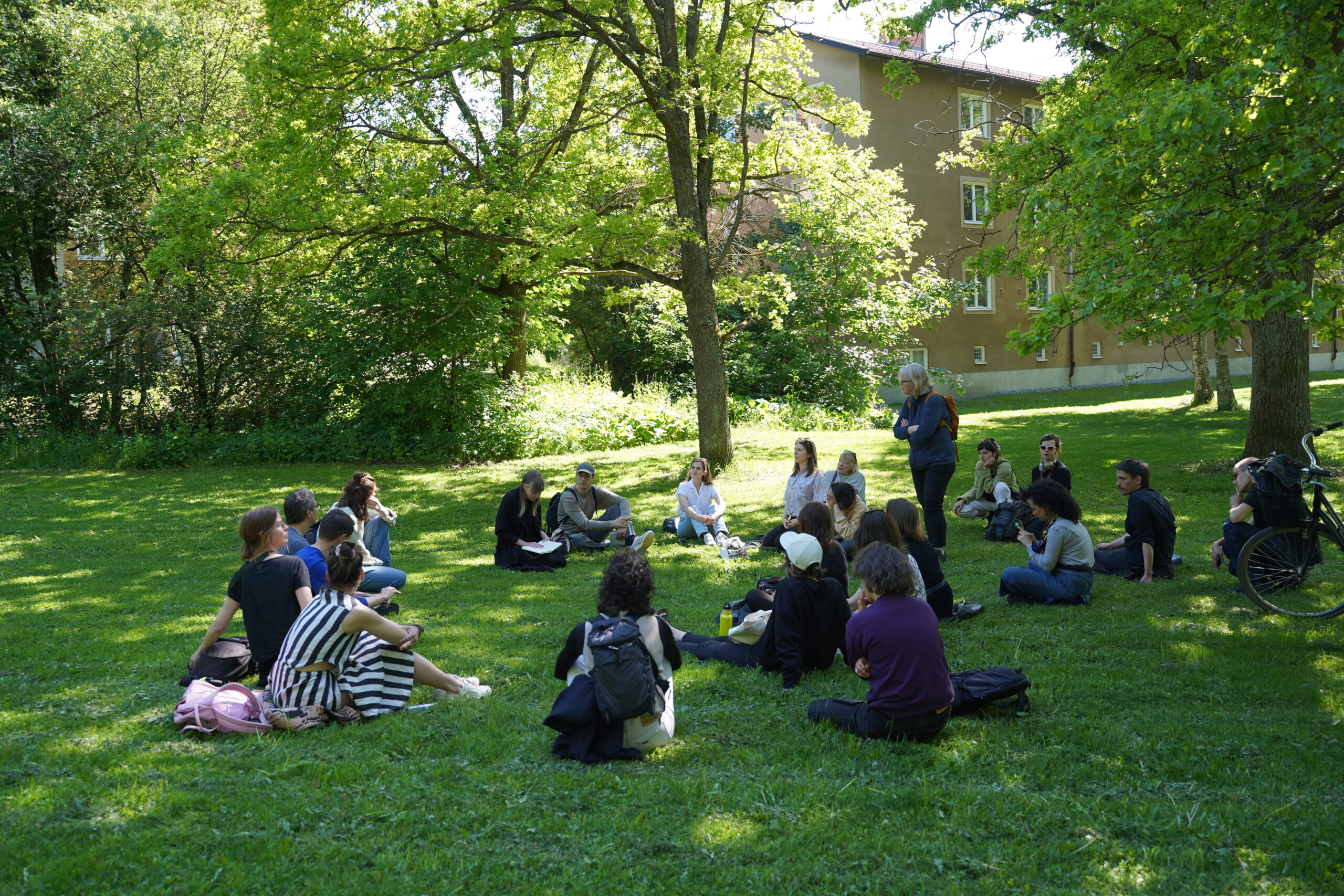Multispecies Commoning
Published 28 October 2024 in Walks
6 June 2022 Stockholm, Sweden
Guided by
Alen Ksoll, Helen Runting and participants.
Curated and organised by
Denise Araouzou
With thanks to
Stella d’Ailly, Grégory Castéra, Alicja Czyczel, Sebastian Dahlqvist, Elof Hellstrom, Emma Holmberg, Hanna Husberg, Judit Sánchez Velasco
Photographs by
Florine Zegers
Guided by
Alen Ksoll, Helen Runting and participants.
Curated and organised by
Denise Araouzou
With thanks to
Stella d’Ailly, Grégory Castéra, Alicja Czyczel, Sebastian Dahlqvist, Elof Hellstrom, Emma Holmberg, Hanna Husberg, Judit Sánchez Velasco
Photographs by
Florine Zegers
Multispecies Commoning was a participatory walk coordinated with the social centre, Hägerstensåsens Medborgarhus in the Hägerstensåsen neighbourhood in Stockholm and acted as a preamble to the festival When Things Are Alive, organised by the participants of the course Collective Practices: Symbiotic Organisations (2021-2022) of Kungl.Konsthögskolan. The festival was hosted by the Medborgarhus between 7th – 9th, June 2022.
Multispecies Commoning
a participatory walk
This walk embarked from the social centre and moved in broad strokes through the surrounding area passing by construction sites, urban forests, public parks, housing developments, playgrounds and the suburbs. The event was inspired by the rich history of Sweden’s People’s Houses (Folkets Hus) and People’s Parks (Folkets Parker) as spaces for political dissent, rest, commoning and land stewardship. Throughout the walk, two guest facilitators led site-specific scores, storytelling circles and discussions that prompted participants to reflect on these hybrid spaces and artificial landscapes.
By walking and consciously taking note of the lives surrounding the social centre, Multispecies Commoning wanted to ‘open up’ the walls of Medborgarhus to include in our understanding of a community the more-than-humans that live with us and invite the locals participating to consider who is involved or not, and why, in the decisions around space, home, access and commons in this specific area of Stockholm.
The aim of Multispecies Commoning was to raise awareness about how housing insecurity and loss of natural habitats are intertwined by intra- and interspecies hierarchies and inequalities, and consider how and why multispecies ecosystems and interspecies relations could be part of just and regenerative urban planning.


Guides
Alen Ksoll works as an educator, librarian, and researcher working with transformative pedagogies, speculative fiction, queer futures, and multi-species ecologies. In developing public programs and holding spaces for knowledge exchange, he proposes workshops, exercises, and games experimenting with models of being together otherwise. In tandem with Rosa Paardenkooper, he runs School in Common, an ecosystem of projects, a collective of collectives, and a gathering of more-than-human friends based in Stockholm. School in Common works around spaces for learning, dreaming, imagining, and being in common, fostering collaboration, mutual recognition, and support.
Helen Runting is an urban planner and architectural theorist. She is a founding partner in the Stockholm-based architecture office Secretary, a practice dedicated to the capacity of architecture to facilitate a dignified life at the scale of the population. Helen engages in research and theory writing from the space of practice, often through self-initiated, collaborative projects. Current research interests include housing as infrastructure, the logics and aesthetics of real estate, and the spatial implications of the concept of wellness. From the essays that comprised her PhD, Architectures of the Unbuilt Environment (KTH, 2018) to Secretary’s award-winning 14 495 Flats: A Metabolist’s Guide to New Stockholm (Secretary, 2021), her work invokes affirmative notions of biopolitics and regulation in order to insist that another, more supportive, (built) environment is possible.










References
A jaywalking manifesto – Uneven Earth. (2022, February 6). Uneven Earth. https://unevenearth.org/2022/02/a-jaywalking-manifesto/
Escobar, A. (2018). Designs for the pluriverse : radical interdependence, autonomy, and the making of worlds. Duke University Press.
Irwin, T., Tonkinwise, C., & Kossoff, G. (2020). Transition Design: An Educational Framework for Advancing the Study and Design of Sustainable Transitions. Cuadernos Del Centro de Estudios de Diseño Y Comunicación, 105. https://doi.org/10.18682/cdc.vi105.4188
Kaika, M., & Ebrary, I. (2005). City of flows : modernity, nature, and the city. Routledge.
Kennedy, C. (2022). Ruderal Resilience: Applying a Ruderal Lens to Advance Multispecies Urbanism and Social-Ecological Systems Theory. Frontiers in Built Environment, 8. https://doi.org/10.3389/fbuil.2022.769357
Kohn, M. (2003). Radical space : building the house of the people. Cornell University Press.
Mitchell, D., Jönsson, E., & Pries, J. (2021). Making the People’s landscape: Landscape ideals, collective labour, and the People’s parks (Folkets Parker) movement in Sweden, 1891-present. Journal of Historical Geography, 72, 23–39. https://doi.org/10.1016/j.jhg.2020.11.002
Monson, J. (Ed.). (2017). A field guide to iLANDing : research scores for urban ecologies. 53Rd State Press.
Pries, J., Jönsson, E., & Mitchell, D. (2020). Parks and Houses for the People. Places Journal, 2020. https://doi.org/10.22269/200512
Rostang, O., Gren, A., Feinberg, A., & Berghauser Pont, M. (2021). Promoting Resilient and Healthy Cities for Everyone in an Urban Planning Context by Assessing Green Area Accessibility. Frontiers in Built Environment, 7. https://doi.org/10.3389/fbuil.2021.797179
Stoetzer, B. (2018). Ruderal Ecologies: Rethinking Nature, Migration, and the Urban Landscape in Berlin. Cultural Anthropology, 33(2), 295–323. https://doi.org/10.14506/ca33.2.09
